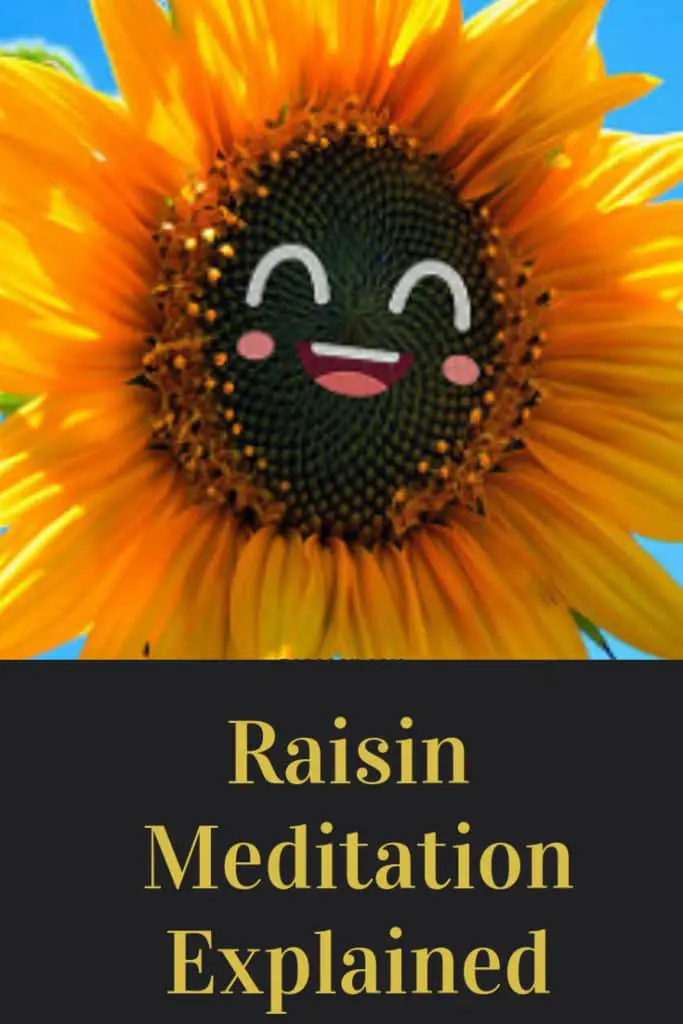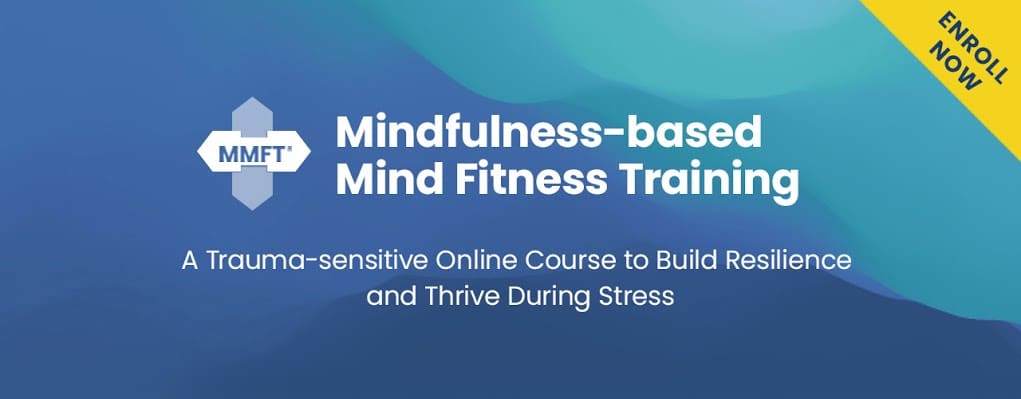The raisin meditation: All you ever wanted to know.
If you came looking in this article for the ins and outs of the raisin meditation plus a free guided meditation, you came to the right place.
But first let me tell you what the raisin meditation is not about. It is not about raisins. It is all about learning to observe the world around us in a novel, open way. It is about learning new things about subjects and objects that we have known our whole lives. In its essence, it is about acquiring something called ‘Beginner’s Mind’
What exactly is the raisin meditation?
The easiest thing to show what exactly is the raisin meditation is to give the script of the full meditation here. I encourage you to try it for yourself. It only takes a few minutes to complete. You can also follow along with my free guided meditation on YouTube. The video is included below the meditation script.
The raisin meditation.
An important point to consider during the entire exercise, is to try to focus only on what you can perceive directly.
By that I mean what you can perceive by the your five senses: touch, smell, hearing, taste and seeing. Stick to these.
You could have the tendency to superimpose prior knowledge about raisins. As best as you can, try to ignore these and look at the raisin as if you have never seen one before. Try, for the duration of this exercise, to be as curious as possible about this object that you will observe.
You might also find yourself having preconceived notions about the raisin. You might, for instance, think it is ugly, or that you like or dislike its taste. If you see these, just notice these thoughts, but for the sake of this exercise, we will not consider them.
- To do this exercise, find yourself a raisin and put it before you. For the moment, do not touch it yet and close your eyes. During a few moments, observe your breathing. Notice yourself breathing in and then, notice yourself breathing out. Do not try to do anything else but to observe yourself breathing.
- With your eyes still closed, pick up the raisin. Keeping your eyes closed will help you in forgetting that it is a dried grape. You will have an easier time being curious if you do not actually see what you are observing. So, pick up the raisin and touch it. How does it feel? Is it heavy, light? What can you sense about the raisin when you touch it. Is it soft? Mushy? Maybe keep it in one hand and touch it with your index finger from your other hand. Squeeze it a bit. What does this feels like? You can now take it between your thumb and index finger and compress it a bit. Is it easily compressed? ANd what does this feel like. I remind you that the question ‘what does it feel like’ is purely tactile. I do not ask whether you find this enjoyable or not. Although this is also a valid observation, it is not one that is traditionally sought after in this meditation.
- While you have the raisin between your thumb and index finger, bring it to your ear and again, squeeze it gently. Can you hear the raisin. This might be a strange question, but we are trying to observe the raisin as though we are a scientist. Therefore we do not yet know whether this information will be useful or not. Just listen if you can hear the raisin.
- Next up is smelling. What can you discover when you smell the raisin. Some people tell me that the raisin has a distinct ‘raisin smell’ to them. Som other might find that it smell like something sweet. Or maybe for you, it is just some small. Whatever you smell, that is ok. We are not trying to achieve anything but to see what we ourselves can discover about this object. And not how we compare to others.
- At this point, you can open your eyes. Have a good look at the raisin. Now you can see its color. Its shape. Are there features that you normally did not notice and not you do? Maybe light reflections, or color tones? Have a good look. Do not hurry and try to be as open as possible.
- Finally, you can put the raisin in your mouth. But do not eat it yet. First, play with it in your mouth. Let it roll with your tongue. Maybe squeeze it a little bit with your teeth, but do not bite it into pieces just yet. Can you feel the texture of the raisin? Can you feel it weight when you play with it in your mouth? Lastly, we will byte the raisin in pieces. Slowly chew on it. What can you observe now? Does you mouth slowly fills with a sweet taste? Are there other flavors associated to your experience? When you continue chewing, does the taste stay the same, or changes? Try to pay as close attention as you can to what is happening. After a while, you can swallow whatever is left.
- This is the end of the formal exercise. Close this article by reflecting a few moments on what you have observed during the meditation. Where there things you have noticed that you didn’t know before? And did this make the raisin more interesting? Or taste better? Or maybe your view of the raisin did not change at all. Mostly people find that they have never seen a simple object in a detailed way like this. That they where able to find some non obvious detail. This concludes the exercise.
If you prefer video to text, here is a video where I guide you trough the practice. This is my first YouTube video ever. I hope you enjoy it.
So, what part is not about raisins?
Well, as you have no doubt noticed, you could substitute the raisin by almost any food you can think of.
Actually, I encourage you to try this exercise anew with some food you really like, like chocolate for instance. And see if your experience is different.
And then, do it a third time, but now with some food you dislike. I agree that these last two meditations already have other learning components than the simple raisin meditation, but they are so interesting that they are well worth it.
What is it really about then?
As said in the introduction, it is all about the beginners minds.
What is this beginner’s mind then? As in general mindfulness meditation, beginner’s mind is a way of looking at the world. And one we are not used to. The phrase ‘ beginner’s mind’ captures it quite well. It is looking at a familiar object or situation as it presents itself, without the overlay of all we have learned in the past.
Now, bear with me in this one.

I hear your just objection: should we not learn from the past? And didn’t all we learned made us better at understanding the world? Yes, yes and yes.
However ?, it also has the tendency to lock us in the paths that are already familiar to us. We have the tendency to exclude the new, or information that does contradict our beliefs in some way.
But that does not mean this information cannot be helpful. Therefore, beginner’s mind is all about adding options. You start noticing the new information, but you still have the choice to act upon what you have learned in the past. You start to get out of the automatic pilot, which is also an important topic within mindfulness.
Let me give you an example from my own life: when my kids were younger, they used to make a lot of noise in the back of the car. They had a lot of fun. Until the fun ended. And they started quarreling.
Kids are so predictable.
But, as it turns out, my reaction was too.
I found out that when my kids were fighting and I was trying to listen to the radio, I’d lash out to them, angrily. Being on the lookout for the new in my life, I started to notice this tendency.
So the next time this scenario unraveled, I could see it unfold and stop myself. At that point I had a choice. Either go with what I usually did, or try something new.
I went for the new, turned off the radio and calmly told them to ‘shut up’ :-). Not only did it work like a charm, but moreover I did not get more stressed due to my reaction.
Now, you will ask me, is this all due to the raisin meditation :-). Alas not. I takes more than that. The raisin meditation was specifically developed as a first demonstration of how much information is available and how much information we miss. Many people are not aware of this fact.
How exactly should we use the raisin meditation in daily life?
This exact same exercise evolves into an exercise that I cherish a lot. It is called ‘being aware of the good in your life’.

I highly recommend this simple practice. The way to do it is very similar to the raisin exercise: once a day, take out 5 minutes of your day where you will focus on something that you enjoy. It could be a cup of coffee or tea, or a piece of chocolate. Or just sitting and watching the birds in the sky. It could be anything that you enjoy.
Just do not choose anything where you have to be thinking. Like for instance reading a book. That will tend to distract you and you will miss most of the observation.
So, sit down and take your cup of coffee and smell it, feel it, taste it. This time, be aware that you are enjoying this activity. But also be on the lookout for other kinds of thought like ‘shouldn’t I be doing something more productive?’ or ‘I do not yet deserve a break, I still need to do …’. Have a look at that too
Final words
I hope you enjoyed reading this article and doing the meditation. Let me know in the comments how it went. If you have questions about the exercise, just post them below and I’ll do my best to respond in a timely fashion.
Hi, I’m Olivier Devroede and I have been meditating seriously since 2009.
Due to the great benefits I have seen in meditating, I decided to become an MBSR trainer myself and start a blog.



